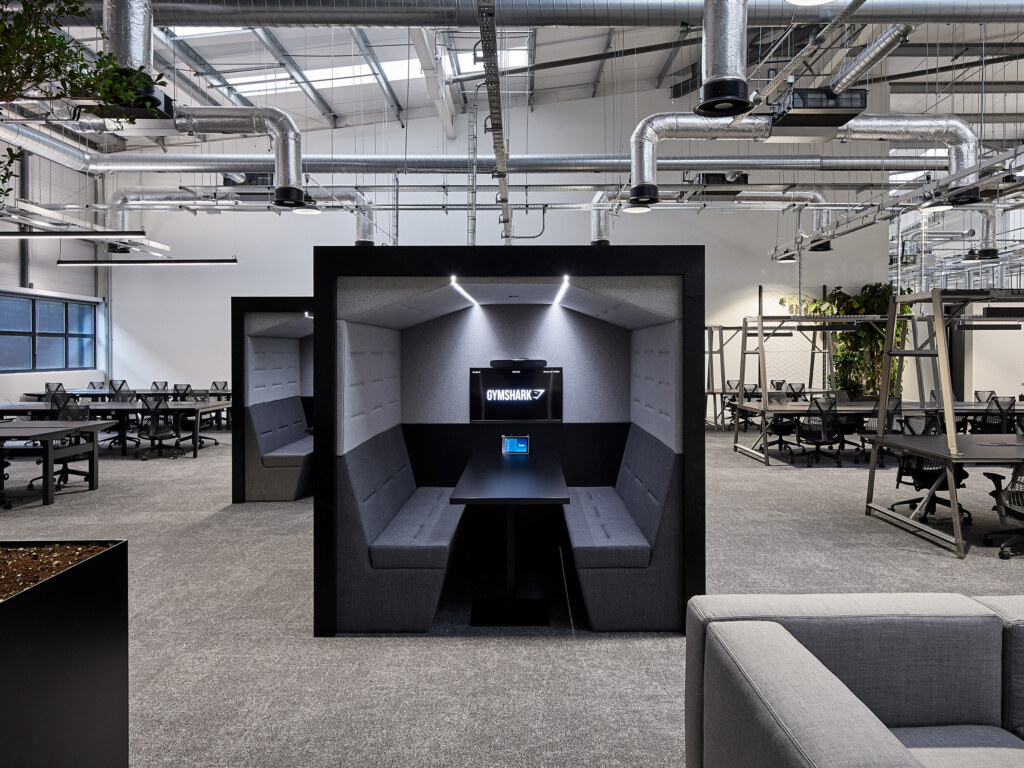-
While we can’t predict the future, the next iteration of office standards may be easier to visualise than most people think.
“Why do we even go to work? Technology has liberated us, it’s freed us, it’s unfettered us from our desks. Why do we actually… go to work?”
Dominic Dugan, Creative Director at Oktra, paused before answering the question he posed.
“For me, it’s because we are inherently social people. We’re social, we want to come together. And when we do come together this stuff happens, it’s fantastic; trust, friendship, loyalties, sharing…. We share the wins of our organisation, but we share the losses too, and that’s a good thing.”
With so many people wondering what the future of office design will look like and questioning whether the office model will survive at all, words like Dugan’s are salient reminders that the workplace is not going anywhere.
It is changing though, and quickly.
What percentage of work will people do in the office? How big will that office be? Will agile working and hot-desking eradicate permanent workspace? What will wellbeing look like?
There is no way to outline the specifics of the next generation of workspaces until we start creating them. However, there are key factors that will undoubtedly dictate the look and feel of those spaces. Here are three elements tomorrow’s workplace will revolve around:
-
Wellbeing and Technology
Buildings affect people. The future of work and the future of talent attraction depend on creating a memorable experience for employees because people have come to expect a certain level of amenities and services.
Despite the millennial generation of Google and Facebook campus compounds, wellbeing is starting to look less like ping pong tables and free donuts, and more like having the right tools to exercise mental and physical agility. In other words, spaces that set employees up for professional success are outweighing the amenity-packed funhouses of yesterday.
-

-
Gymshark just invested £5.1 million in its professional family, working with Oktra North in Birmingham to build the first ever Gymshark Lifting Club. GSLC is more than just a world-class fitness facility – it’s a complete creative studio, R&D factory and health bar. The new facility empowers its people with the capacity to produce original content for their website, social media and fitness app, entirely in-house. It also cuts their product development cycle down from two weeks to two hours.
Technology and connectivity will be even more imperative to future workspaces than they are to current ones. The first digitally native generation is beginning to enter the workforce, and their inherent digital connectivity is already shaping the way we communicate. Regional Workplace Manager at Slack, Ciaran Chaney, predicts the disappearance of email.
“Unless you’re investing in technology, you’re going to be left behind,” he says.
-
Sustainability
Tomorrow’s workplace will have to be sustainable. Not just to attract and retain younger generations of environmentally aware talent, but to make sure there is a tomorrow at all.
Humankind is facing ecological collapse, and we’ve witnessed the terminology shift from climate change to climate crisis, and now climate breakdown. The way we build workspace and the way that space operates will have to change in order to mitigate otherwise severe, and potentially uninhabitable, environmental changes.
-

-
Current certifications for sustainability like ISO 14001 or The Planet Mark – both of which single out companies actively committed to reducing their environmental impact – will have to become standards to make sufficient change. BREEAM assessment standards and Energy Performance Certificates will only increase in importance as regulations on energy consumption grow tighter.
Circular economies will deepen as larger percentages of fit out materials are sourced responsibly. To cut carbon emissions down to net-zero by 2050, workplace design will have to incorporate a larger degree of reused and recycled materials, from furniture made of compressed fishing nets, to countertops made of melted yogurt containers.
Smart technology will also be used to regulate energy consumption. Smart lighting systems are changing the way we consume resources. We recently built the UK’s first office with a Human Centric smart lighting system. These systems constantly collect digital data by monitoring things like motion and heat, recording that data in a way that allows people to see when and how spaces are being used. Lights turn off automatically, conserving energy, and unused space can be optimised for added efficiency.
-
Adaptability
Future workspace will have to be adaptable. Change is accelerating, and success is quickly becoming linked to a company’s ability to accommodate that change. Private offices will come to incorporate elements of coworking spaces, with movable furniture and impromptu meeting spaces. Where we work is becoming increasingly flexible, and it needs to continue to do so in order to adapt to peoples’ changing needs – like working remotely. Larger companies like Facebook, HSBC and Airbnb are incorporating flex space into their offices so they can accommodate change.
-

-
Will hot-desking completely replace individualised desks? Probably not. Different jobs require different amounts of space, and different people require different work environments in order to perform. However, communal desks can be a great way to accommodate increasing amounts of remote working, allowing companies to use space more efficiently while still providing desk space for employees who need it.
The future is not predicable, but successful spaces will increasingly reflect a company’s ability to adapt to whatever that future may bring.
“I’m quite excited about something impressive coming along,” says Dugan.
“What is it? I don’t know, but I’m looking forward to it emerging… Something that can… morph with the users and the way they use the space… through digital information and the use of digital technology.”
-
Get in touch to find out how we can help you drive business performance
020 7553 9500
info@oktra.co.uk
-

